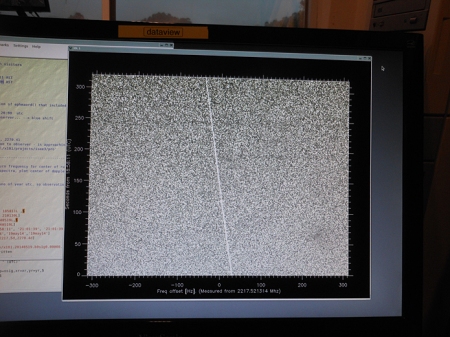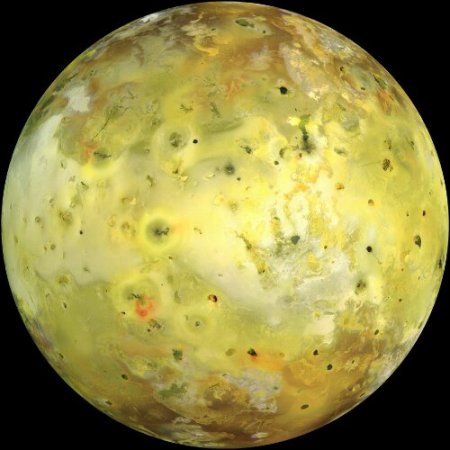After breaking the record for the longest stay in orbit for women, Samantha Christofertti made it safe back to earth. TMA-15M landed safely in Kazachstan yesterday at 1344 GMT.
Coverage:
After breaking the record for the longest stay in orbit for women, Samantha Christofertti made it safe back to earth. TMA-15M landed safely in Kazachstan yesterday at 1344 GMT.
Coverage:
This is something I really find pretty cool. ISEE-3 [3] is an abandoned space probe by NASA. Originally it was intended to investigate Earth’s magnetosphere, the Sun’s plasma wind cosmic rays in general. Launched in 1978 it conducted it’s mission until 1982, when the probe got a new designation: It was renamed ICE (International Cometary Explorer) and was sent into the comet Giacobini-Zinner‘s plasma tail and used it instruments to check the surroundings. Even cooler, after that it passed Halley’s tail in 1986 as well! But it’s journey wasn’t over yet; being a veteran, it was now repurposed again to study Sun’s coronal mass ejections.
In 1997, NASA decided to end the mission [3], shut down the probe and only the telemetry was left operational. Eventually the ground based control station was dismantled and the probe was left to rest in space.
Until. In March 2014, ham radio enthusiasts at Bochum’s radio observatory got in contact with ISEE-3 [2]. A fundraiser to get back in touch & control with the probe was quickly initiated which raised almost USD 160,000 [4] in a few weeks; it’s purpose: Regain control and continue with scientific operations! Ettus Research donated a few SDR transceivers [1]; NASA finally approved the mission [6]; and as of yesterday, the ISEE-3 reboot team is in control of the spacecraft [5].
Everybody is so excited that they even may use the world’s largest radio dish in Arecibo!

“Waterfall plot of the signal from ISEE-3 today as detected by the big dish. We were able to hear it on our Software Defined Radio unit today as well.” (Credits: Space College et al, Source: http://spacecollege.org/isee3/listening-to-isee-3-from-arecibo.html)
This is so cool, I’m “happier than a terrier in barrel full of rats” [7]. Exciting times!
Bibliography:
[1] K. Cowing, “Ettus Research Helps Power ISEE-3 Reboot Effort – Space College,” Space College, 08-May-2014. [Online]. Available: http://spacecollege.org/isee3/ettus-research-helps-power-isee-3-reboot-effort.html. [Accessed: 30-May-2014]
[2] P. Gülzow, “ICE Satellit in Bochum empfangen,” AMSAT-DL, 09-Mar-2014. [Online]. Available: http://www.amsat-dl.org/index.php/news-mainmenu-97/198-ice-satellit-in-bochum-empfangen. [Accessed: 24-May-2014].
[3] “International Cometary Explorer,” Wikipedia, the free encyclopedia. 30-May-2014.
[4] “ISEE-3 Reboot Project by Space College, Skycorp, and SpaceRef.” [Online]. Available: http://www.rockethub.com/projects/42228-isee-3-reboot-project-by-space-college-skycorp-and-spaceref. [Accessed: 24-May-2014].
[5] K. Cowing, “We Are Now In Command of the ISEE-3 Spacecraft – Space College,” Space College, 29-May-2014. [Online]. Available: http://spacecollege.org/isee3/we-are-now-in-command-of-the-isee-3-spacecraft.html. [Accessed: 30-May-2014].
[6] K. Cowing, “NASA Signs Space Act Agreement With ISEE-3 Reboot Project – Space College,” Space College, 21-May-2014. [Online]. Available: http://spacecollege.org/isee3/nasa-signs-space-act-agreement-with-isee-3-reboot-project.html. [Accessed: 30-May-2014].
[7] T. Pratchett, “a quote by Terry Pratchett,” Goodreads. [Online]. Available: http://www.goodreads.com/quotes/789128-happier-than-a-terrier-in-a-barrel-full-of-rats. [Accessed: 30-May-2014].
Now this is something I found pretty interesting; biologists found out that bees use a time-to-contact strategy when planning their landing. ESA’s Advanced Concept Team already summed up all relevant information, so I’ll give just the appropriate citations for further reading. Bonus: ACT implemented this strategy in a Parrot AR drone!
References:
There was this interesting question if a star-formation region must be necessarily located in a galaxy; after some investigation I found out, apparently, there’s no need to!
This is big news; A friend sent me a tip to an article in the german IT new outlet Golem, which said, that Wired says that NASA will release some of it’s software “at no cost“, although I bet that quite a few softwares will be subject to export restrictions (think rocket guidance).
I have honestly no idea why neither Golem nor Wired bothered to link to NASA’s press release and future download page, but here you go:
So why is it that +European Space Agency, ESA made #Sentinel-1 head north at launch instead of the regular east during launch? Usually you’d start east to take maximum advantage from earth’s rotation (which turns counter-clockwise if north is up) to save fuel. However, Sentinel-1 ist on a solar synchronous orbit [1], which is slightly retrograde (if I looked it up correctly [3], it should have an inclination of about 98° at a orbital periode of 96 minutes and a height of 574 km). If you’d start straight ahead to the east you’d end in a very low-inclined orbit which is directly related to Kourou’s space port lattitude (~5° North). When you’re already in orbit, changing the inclination is hard. You need a lot of delta-v – changes in velocity – needing a lot of fuel – which you need to carry with you – increasing the mass – needing even more fuel [2]! And considering that changing velocity is dependent on the current mass and velocity – kinetic energy – it’s best to change the inclination as soon as possible, while you’re not at already at thousands of meters per seconds. It still needs way more fuel to get an object into an polar or (worse) retrograde orbit, but you better do it early and better do it fast.
Edit: Fun fact: Sentinel-1’s velocity is supposed to be 0.89 times the speed of General Zod’s spaceship in the movie Man Of Steel. Thank you, +Wolfram|Alpha :-) http://www.wolframalpha.com/input/?i=%282*%CF%80*%28polar+radius+earth+%2B+%28%28578+km%29%2F2%29%29%29%2F96+minutes
1. See https://en.wikipedia.org/wiki/Sun-synchronous_orbit
2. See rocket formula, an ordinary differential equation describing how much fuel is needed to reach a certain velocity, taking into account that you’re losing mass when burning fuel: https://en.wikipedia.org/wiki/Tsiolkovsky_rocket_equation
3. See https://en.wikipedia.org/wiki/Sun-synchronous_orbit#Technical_details – Table 1
Dear space geeks, I had a little chat with the gals & guys from Rosetta’s MIDAS-Team and I’d like to sum up the relevant information as a little consolidated Twitter-timeline.
https://twitter.com/itnomad/status/451046181590691840
OK, cool, now that is something! Then they posted a schematics of the MIDAS atomic force microscope and I just couldn’t resist asking more:
https://twitter.com/itnomad/status/451455163048660995
https://twitter.com/itnomad/status/451664649256460289
I surely will do that! But also be sure to read their bit about the latest software upgrade.
NASA’s Astronomy Picture of the Day:

Io in true color; NASA APOD; Source: http://apod.nasa.gov/apod/ap140330.html
Source: http://apod.nasa.gov/apod/ap140330.html
“[…] sulfur and molten silicate rock”. Not quite as crappy as HD 189733b [1], but not really comfy either.
1. “According to some recent news accounts, the atmospheric temperature is believed to be over 1000° C, with 7000 kph winds. […] And it rains molten glass. Sideways.” — http://astronomy.stackexchange.com/a/43/627
Good Morning space geeks, I’m almost ready for my trip to the German Aerospace Center in Cologne to watch Philae’s commissioning in their Microgravity User Support Center (MUSC). But since I have a few hours to kill I thought I share a few thoughts with you about the microgravity in 67P’ vicinity and how the solar wind and solar radiation pressure affects Rosetta’s orbit around 67P. Warning: May contain mathematics :-)
So, what are the forces acting on Rosetta while lurking around 67P? The primary forces are:
There’s also the gravity of the sun, but since 67P and Rosetta are very close to each other and share the same orbit around the sun, we neglect this for now.
Before starting, I ask you to remember a few basic pinciples.
Newton’s Law of Universal Gravitation. This law say that the force (in Newton) between two masses is the product of their mass multiplied with the gravitational constant, divided by the square of their distance:
So, what’s the force acting between Rosetta and 67P if Rosetta is on a circular, 1000 meter orbit? From Wikipedia I learned that 67P’s mass is about ; Rosetta’s mass is about two metric tons, so
. The gravitational constant is, as (as we think) everywhere in the observable universe,
.
So, only about 0.4 Newton; that is not a lot. As the ever helpful Wolfran|Alpha search engine suggests, this is the peak force your fingers exert on your keyboard while typing. When I first did this calculation I really wondered how you could possibly keep Rosetta in a stable orbit around 67P with such little forces at work when Rosetta is constantly being bombarded with solar radiation and when the solar wind keeps blowing.
But as always with physics, assumptions are nice, but if you can do the math, just do it. So: Is the combined forces of the solar wind and solar radiation pressure big enough to affect Rosetta and would Rosetta need to do a lot of correction burns to keep it’s orbit stable?
Let’s head over to the radiation first. To figure out the force we need the solar radiation pressure and multiply this with the effective cross-section of Rosetta. I assume a cross-section of 1.5 m^2 – that might be wrong, but the principle of calculation stands.
First, a definition which was deliberately marked with “DO NOT CITE”, but I found this definition most easy to understand:
“Radiation pressure is the pressure exerted upon any surface exposed to electromagnetic radiation. If absorbed, the pressure is the power flux density divided by the speed of light. If the radiation is totally reflected, the radiation pressure is doubled.”
Source: http://www.princeton.edu/~achaney/tmve/wiki100k/docs/Radiation_pressure.html
So, what is the power flux (measured in Watt per meters squared) at Rosettas current position? Rosetta is, as of today, about 4.25 AU away from the sun. The power flux on earth is around so we need to use the inverse-square law to calculate the power flux at 4.25 AU.
The Inverse power law states:
Hence:
However, Rosetta is not absorbing all the power 100%; I have no figures, so I assume it absorbs about 50% () of all the radiation. We will now calculate the effective radiation pressure from the power flux at Rosetta’s current position.
Now multiply by Rosetta’s effective cross-section to convert the pressure to force:
So… compared to those 0.4191 Newton, that’s not a lot! But what about the solar wind? The formular for calculatng the solar wind pressure at a distance of 1 AU is:
where pressure P is in nPa (nano Pascals), n is the density in particles/cm3 and V is the speed in km/s of the solar wind. Wolfran|Alpha told me today the parameter for n and V2:
We also need to apply the inverse power law again to draw conclusions for the distance at 4.25 AU:
Not a lot either! Now add these forces and compare to the gravitational forces between 67P and Rosetta:
So we showed that solar wind and radiation is so little that it won’t affect Rosetta’s orbit much.